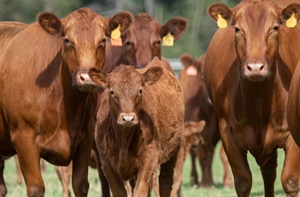Concepts actuels pour la synchronisation de l’oestrus chez les bovins
Résumé
En reproduction animale, la synchronisation joue un rôle majeur en provoquant l’œstrus d’animaux à un moment souhaité en utilisant des hormones exogènes. Au cours des dernières années, un certain nombre de substances ont été introduites pour induire l’œstrus chez les animaux d’élevage. L’ovulation peut être synchronisée avec des progestatifs et un traitement par association d’œstrogènes, un régime de 2 doses de prostaglandines (PG), ou une combinaison de GnRH et de PG. La progestérone peut être considérée comme un produit de choix, car elle est facilement appliquée à faible coût. L’acétate de melengestrol (MGA) et les dispositifs PRID et CIDR sont les progestatifs approuvés pour l’usage chez les vaches. Les cinq systèmes d’insémination à temps fixe avec la combinaison GnRH-PG sont Ovsynch, Cosynch, Select Synch, Hybrid Synch et Heatsynch. Hybrid Synch est moins coûteux et facile à manipuler par rapport à Ovsynch et Co-Synch mais plus que Select-Synch. L’utilisation du cypionate d’Estradiol dans le cadre du protocole Ovsynch peut offrir une alternative aux producteurs laitiers. En Afrique subsaharienne, le niveau d’éducation des éleveurs, le faible potentiel des ressources disponibles (pâturages cultivés ou naturels, répartition des pluies, disponibilité de l’eau, environnement écologique, etc.) et le coût de la technologie sont des facteurs expliquant en partie pourquoi l’utilisation des techniques modernes de reproduction (synchronisation de l’œstrus, insémination artificielle…) ne sont pas appliquées à l’échelle commerciale.
Mots clés: Bovins, fertilité, GnRH, oestrus, progestagènes, prostaglandines.
Téléchargements

Publié-e
Comment citer
Numéro
Rubrique
Licence

Revue Marocaine des Sciences Agronomiques et Vétérinaires est mis à disposition selon les termes de la licence Creative Commons Attribution - Pas d’Utilisation Commerciale - Partage dans les Mêmes Conditions 4.0 International.
Fondé(e) sur une œuvre à www.agrimaroc.org.
Les autorisations au-delà du champ de cette licence peuvent être obtenues à www.agrimaroc.org.

